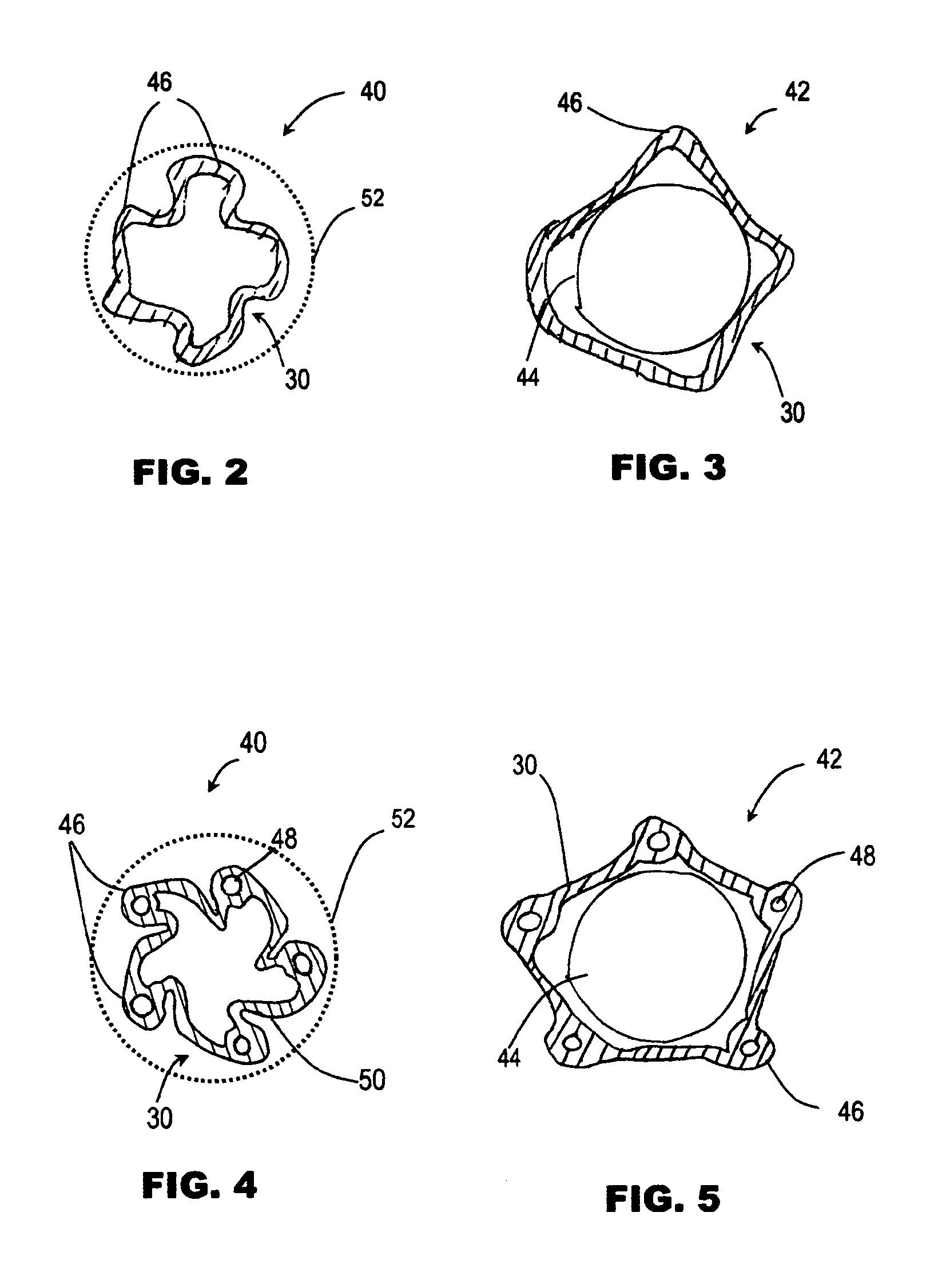Method and Apparatus Useful for Transcatheter Aortic Valve Implantation
a technology for aortic valves and transcatheters, applied in the field of methods and apparatus useful for transcatheter aortic valve implantation, can solve the problems of difficulty in navigation, design compromise, and various difficulties of transcatheter heart valve replacement procedures
- Summary
- Abstract
- Description
- Claims
- Application Information
AI Technical Summary
Benefits of technology
Problems solved by technology
Method used
Image
Examples
Embodiment Construction
[0076]Where appropriate, the same reference numerals are used to denote equivalent features in various different embodiments.
[0077]Broadly speaking, one aspect of the present invention relates to a guide catheter 30 defining a substantially tubular delivery lumen 28 through which one or more other functional catheters or devices may be introduced. In various preferred embodiments, the guide catheter 30 may have one, or any combination of two or more, of the following features (which are all optional):
[0078](i) Referring to FIG. 1, the guide catheter 30 may have a sufficient length to extend from a site of a skin incision 32, along a vassal route of the vasculature to a position in the ascending aorta 34. For a transfemoral approach, the guide catheter may have a sufficient length to extend from an incision 32 into the femoral artery, along the descending aorta 36, the aortic arch 38 to the ascending aorta 34. For example, a transfemoral guide catheter may have a length of at least 1...
PUM
 Login to View More
Login to View More Abstract
Description
Claims
Application Information
 Login to View More
Login to View More - R&D
- Intellectual Property
- Life Sciences
- Materials
- Tech Scout
- Unparalleled Data Quality
- Higher Quality Content
- 60% Fewer Hallucinations
Browse by: Latest US Patents, China's latest patents, Technical Efficacy Thesaurus, Application Domain, Technology Topic, Popular Technical Reports.
© 2025 PatSnap. All rights reserved.Legal|Privacy policy|Modern Slavery Act Transparency Statement|Sitemap|About US| Contact US: help@patsnap.com



